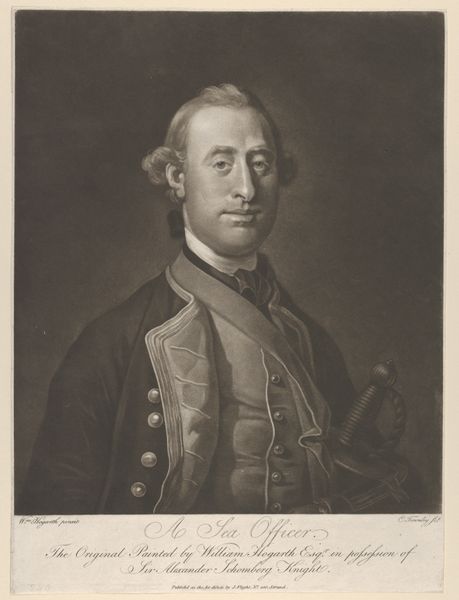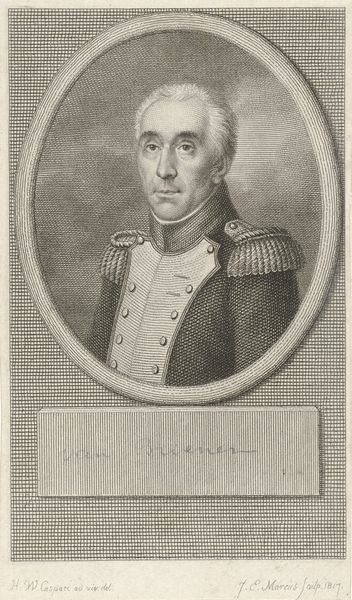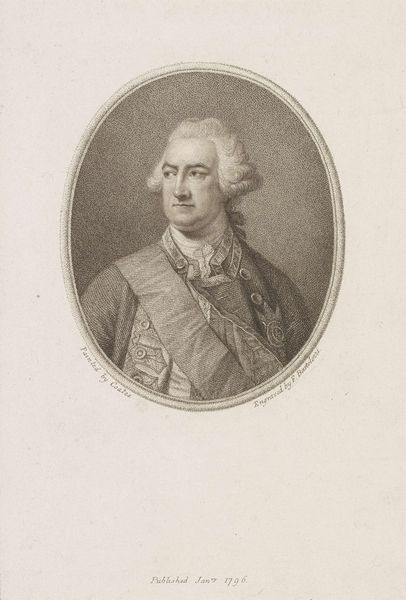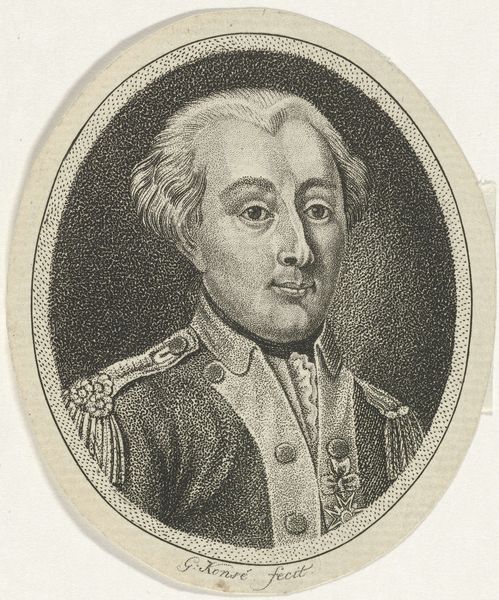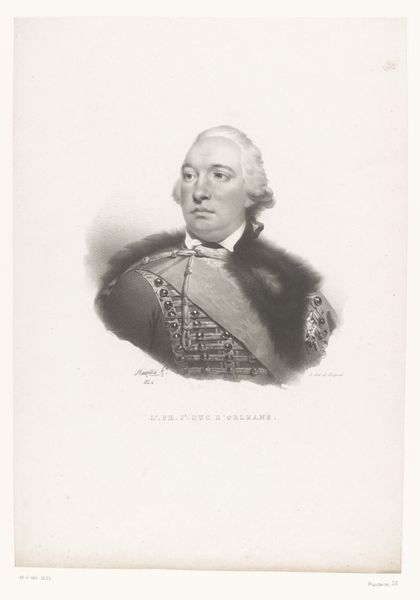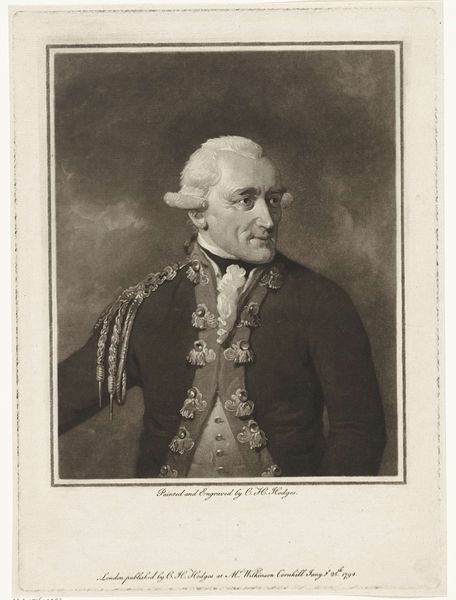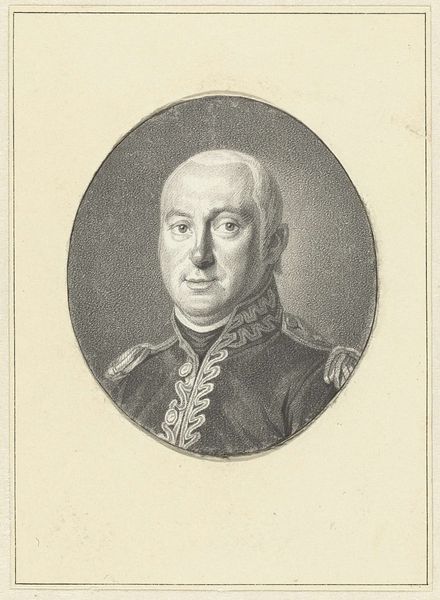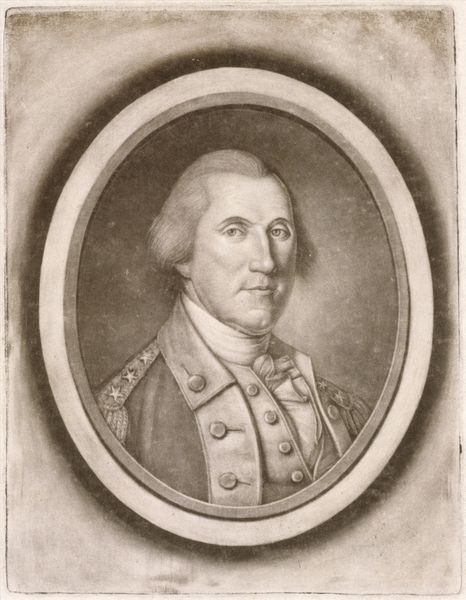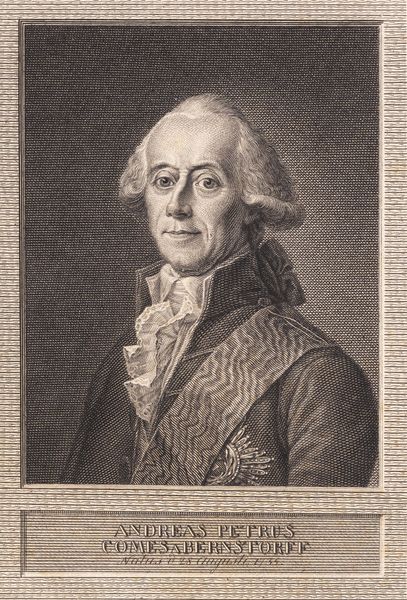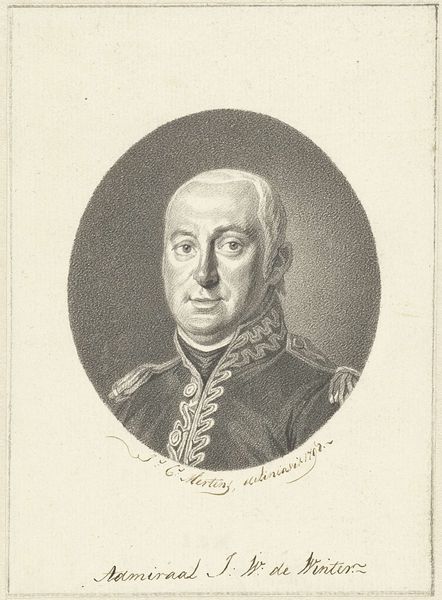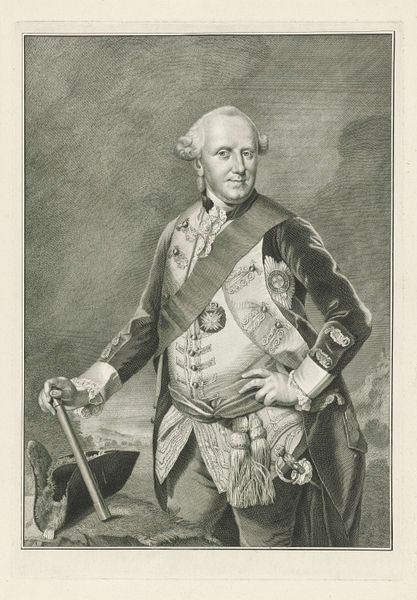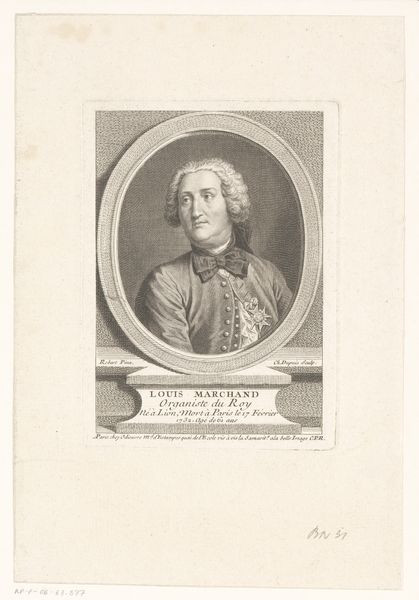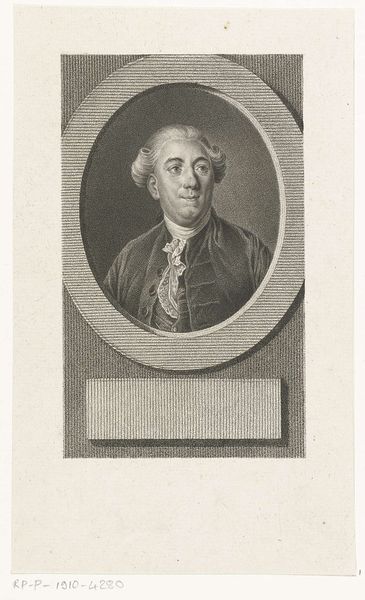
print, engraving
#
portrait
#
neoclassicism
# print
#
old engraving style
#
history-painting
#
engraving
Dimensions: height 145 mm, width 93 mm
Copyright: Rijks Museum: Open Domain
Curator: This is a print depicting Captain Henry Wilson, made sometime between 1784 and 1790. It's currently part of the Rijksmuseum collection. Editor: There’s a somber mood. He’s framed within an oval that almost feels like a locket. The tonal range of the engraving seems quite limited. I'm interested in what the process may have been to create such a detailed portrait. Curator: The artist, Franciscus Sansom, created this print using engraving, a medium perfectly suited to the Neoclassical style it embodies. This particular style often invoked classical history. In that respect, portraiture was not only representational but imbued its subject with an air of gravitas, placing the sitter within a historical lineage of heroism. Editor: Precisely! And speaking of the engraving, observe the minute details rendered: each line meticulously etched to delineate form and texture. Can you imagine the time and labour involved? From a material perspective, we should think about the copperplate itself, the tools used, and the distribution of such a print—it would serve various functions, from commemorating an individual to spreading specific ideologies, or solidifying social structures of power. Curator: Yes, a print like this, reproduced in multiples, served as a powerful means of disseminating an image of authority. Even elements in the background such as the depiction of sailing ships further build upon this. The ship becomes symbolic not only of his profession but a visual marker of global power. It suggests courage, and, of course, Britain’s complex relationship with maritime authority in this period. Editor: What fascinates me is how easily these images, even in their smaller, mass-produced form, contributed to constructing this image of British Naval power. How something, on a simple sheet of paper, participates in these complex, shifting networks of colonial influence. It makes you think about how power gets materialized and distributed, even through these ephemeral items. Curator: I think it brings another dimension to seeing portraits such as this. Editor: Indeed. A powerful memento to a time when the printed image helped cement social hierarchies.
Comments
No comments
Be the first to comment and join the conversation on the ultimate creative platform.
